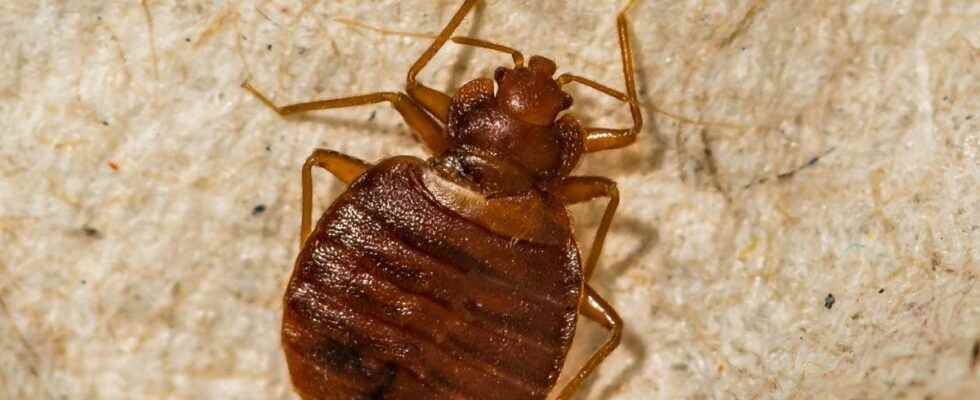Published on
Updated
Reading 2 mins.
Have you been sleeping badly for several days, finding traces of bites on your back, arms, legs? Chances are you have bed bugs! These pests invite themselves into warm places like mattresses and are difficult to get rid of. However, ANSES warns about the use of chemicals (to eradicate them), which it advises to use “as a last resort”.
Bed bugs are a real scourge and it’s hard to get rid of them. Often those affected turn to chemicals, but they are not without danger. This is why the National Food Safety Agency (ANSES) reminds us that we must first try to use non-chemical methods.
What are bed bugs?
Insects that hide in warm places, such as mattresses and box springs, bedbugs are nocturnal pests. This is where they move to sting in order to feed on blood. A female can lay between 5 and 15 eggs per day, which allows them to proliferate very quickly. In addition, the life expectancy of bedbugs is one year without food. That is to say if they are tenacious.
Who can get bedbugs?
Everyone is concerned. Indeed, bedbugs can be brought home during a trip through clothing and luggage, but also through the purchase of second-hand furniture, bedding or clothing. Like lice, it is therefore not a question of cleanliness. Between 2016 and 2020, official figures reported by ANSES estimate that 7% of French people were affected by bed bugs.
Bed bugs: what consequences?
Although they do not carry disease, bedbug bites can cause itching and allergic reactions. Those affected can quickly feel helpless and helpless against these critters, which leads them to use ineffective or dangerous products.
ANSES thus evokes more than 1,000 cases of sometimes serious poisoning between 2007 and 2021, figures from poison control centers. The symptoms are “respiratory discomfort, cough, oropharyngeal pain or irritation, but also itching, headaches or dizziness“. According to ANSES, “serious poisoning and one death have also been reported”.
What to do in the event of a bed bug infestation?
ANSES issues a few recommendations for people faced with this problem. The agency advocates the use of non-chemical techniques, including:
- “Using a vacuum cleaner, vacuum all surfaces meticulously to capture eggs and parasites. Then clean the vacuum cleaner duct, wrap the bag in a plastic bag and dispose of it in an outdoor trash can to avoid contaminating other ‘other places ;
- machine wash clothes and household linen at more than 55°C;
- if there is no washing machine, put the clothes in the freezer at -17°C for at least 72 hours;
- clean nooks or upholstery with a high-temperature dry steamer (at least 120°C), (available for hire), which destroys all stages of bedbugs”.
And if all this is not enough, ANSES recommends the use of a pest control specialist “rather than applying insecticides yourself”.
And finally recalls the importance of respecting the indicated re-entry period, that is to say the period from which one can return to the treated area, after the application of the products, in order to avoid any risk of intoxication. .
